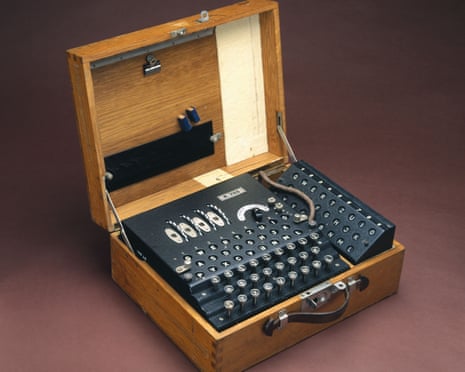The Enigma Code: A Challenge No Longer
The German Enigma cypher machine, used by Axis powers during World War II, was once considered an unbreakable code. However, experts now say that with modern computing power and artificial intelligence (AI), cracking the Enigma code would be a straightforward task.

The Enigma machine was an electro-mechanical device resembling a typewriter, with three rotors that had 26 possible positions, a reflector that sent signals back through the rotors, and a plugboard that swapped letter pairs. Its complex setup meant that even typing the same key twice would produce different letters. The initial settings were changed daily, making it a formidable cipher.
“Enigma wouldn’t stand up to modern computing and statistics,” said Michael Wooldridge, a professor of computer science at the University of Oxford. The number of possible ways to encrypt a message was astronomically large, making manual decryption impossible. However, Alan Turing and his team developed ‘Bombes,’ crude hardwired mechanical computers that could search through numerous possibilities to decrypt Nazi messages.
By 1943, these machines could decipher two messages per minute. Dr. Mustafa A Mustafa, a senior lecturer in software security at the University of Manchester, noted that Enigma had weaknesses, such as no letter being represented as itself when enciphered. Turing’s team exploited these weaknesses to automate the decryption process.
Modern technology has made the process even simpler. “It would be straightforward to recreate the logic of Bombes in a conventional program,” Wooldridge said. AI models like ChatGPT can achieve this, and with modern computing speed, the laborious work of Bombes would be done ‘in very short order.’
Researchers have previously used an AI system trained on German texts, along with 2,000 virtual servers, to crack a coded message in just 13 minutes. While Enigma would not withstand modern computing, other encryption techniques like the Rivest-Shamir-Adleman (RSA) cipher remain robust due to their basis on large prime numbers.
“In the case of RSA, it’s the problem of factoring very large numbers. Brute force techniques just won’t work on these problems,” Wooldridge explained. However, he noted that future developments like quantum computers might require new encryption techniques.
While cracking Enigma during WWII was a significant achievement, Mustafa emphasized its importance: “God knows what would have happened if we hadn’t cracked Enigma in time.” The feat shortened the war by up to two years and demonstrated the power of codebreaking.
Today, the legacy of Turing and his team continues to influence modern computing and cryptography, serving as a reminder of the cat-and-mouse game between code makers and code breakers.


